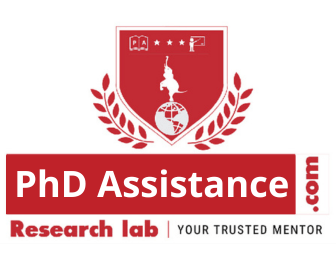In spite of the increasing importance of adaptive reuse (AR) to sustainability and the overlay of urban development on societal needs, I have just completed some bibliometric research that indicates a marked decline in output since 2021. This paradox, of the research not being in alignment with the on-the-ground relevance of the issue, is indicative of a research-practice gap and consequently it would be beneficial to investigate why AR is diminishing in the research context.
Bullen, P. A., & Love, P. E. D. (2011). Adaptive reuse of heritage buildings. Structural Survey.
Lu, Y., & Tam, V. W. (2013). A review on the impact of adaptive reuse on building sustainability. Facilities.
Plevoets, B., & Van Cleempoel, K. (2019). Adaptive Reuse of the Built Heritage. Routledge.
The bibliometric evidence suggests that adaptive reuse research is fragmented, with little international co-authorship and regional and national clustering of research collaboration across countries. The absence of cross border research collaboration may be hampering the development of globally relevant reuse models and knowledge sharing.
1.What regional clusters in AR research are dominant and how do they interact with one another?
2.What are the reasons for the limited international collaboration in this field?
3.How can researchers improve cooperation and working together on research internationally?
Increased cross-national collaboration as part of shared research projects.
Identification of strategic opportunities for partnerships on funding (e.g. trans-national research funding) and providing innovation for the coninent and world.
Greater global exchange of knowledge relating to sustainable architecture.
Yung, E. H. K., & Chan, E. H. W. (2012). Social sustainability in urban conservation. Facilities.
Glänzel, W., & Schubert, A. (2005). Analyzing scientific networks through co-authorship. Scientometrics.
Chatterjee, S. (2021). Science collaboration in the global south. Current Science.
The bibliometric analysis reveals that AR research has been published by these three countries more than any others; despite this great interest, the applicable emerging AR policies in Italy, China and Turkey have very different actualization across the three countries. Understanding their regulatory environments might provide valuable insights into what encourages or prevents successful AR at a policy level.
A comparative framework for adaptive reuse at the national level.
Recommendations for harmonizing sustainable development and heritage policy.
Policy Guidelines for professionals and municipal authorities.
Douglas, J. (2006). Building Adaptation. Butterworth-Heinemann.
Shipley, R., Utz, S., & Parsons, M. (2006). Does adaptive reuse pay?. Journal of Property Research.
Langston, C. (2012). Validation of the adaptive reuse potential (ARP) model. Facilities.
Adaptive reuse has largely been framed and discussed from a technical perspective; however. the bibliometric analysis highlighted a lack of consideration for local stakeholders when planning and executing, reuse projects. There is a need for a greater emphasis on participatory approaches to ensure social sustainability and community buy-in.
Frameworks for community-seeking AR approaches.
Evidence of improved outcomes from socially engaged reuse.
Contributions to the theoretical emphasis of participatory design in heritage.
Yung, E. H. K., & Chan, E. H. W. (2012). Urban conservation and community engagement. Facilities.
Chitty, G. (2017). Heritage, Conservation and Communities: Engagement, Participation and Capacity Building. Routledge.
Arnstein, S. R. (1969). A ladder of citizen participation. Journal of the American Institute of Planners.
This study suggests a thematic shift in research on adaptive reuse: greater emphasis on sustainability, cultural heritage, and levels of urban regeneration beginning in 2017. This illustrates that there has been a shift in emphasis in the last five years. Knowing that there has been a change in and themes of research may assist in providing research themes that academic scholars need to travel to when they seek to produce new ideas at this time, and possibly preventing stagnation in the area of adaptive reuse.
Trend guesses regarding future themes of AR research.
Framework for developing curriculum in design(architecture) education.
Further consideration for journal publishers and funding organizations.
Zhang, Y., & Ma, L. (2020). Bibliometric analysis of urban regeneration research. Sustainability.
Plevoets, B., & Van Cleempoel, K. (2011). Adaptive reuse as an emerging discipline. Journal of
Cultural Heritage Management and Sustainable Development.
Leydesdorff, L., & Rafols, I. (2009). A global map of science based on new keyword co-occurrence techniques. Journal of the American Society for Information Science.
As adaptive reuse is widely positioned as a sustainable and less-costly way forward than a new build, we have almost no empirical analysis that encompasses its economic feasibility across a building life cycle. Most examination of adaptive reuse projects exist primarily in architectural or heritage context and make evident their general avoidance of analysis that balances costs and benefits over a longer term. The lack of standardized methods of estimating lifecycle costs and reuse opportunity costs, and value after occupancy contributes to the uncertainty developers, policy makers and investors face deciding whether to pursue reuse investments.
What economic and lifecycle assessment models are best for AR projects situated in dramatically different urban contexts, such as suburbs, rural areas, and downtown economic districts?
What part do multi-criteria decision-making tools play in helping evaluate economic feasibility and viability related to AR initiatives
What are the positive/negative economic trade-offs associated with costs of preservation, retrofit, and new builds looked at across a building life cycle?
Framework that lends to a practical way to provide credible feasibility studies for adaptive reuse.
Decision making and evaluation tools that provide assistance to investors, architects and urban planners.
Evidence-based policy recommendations and increased understanding of private investment in to adaptive reuse.

